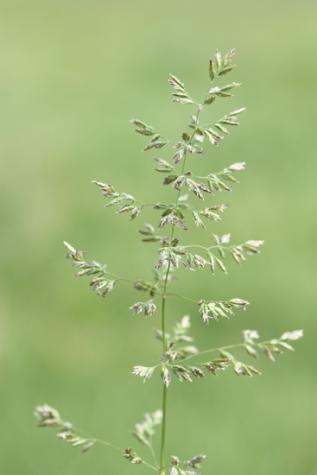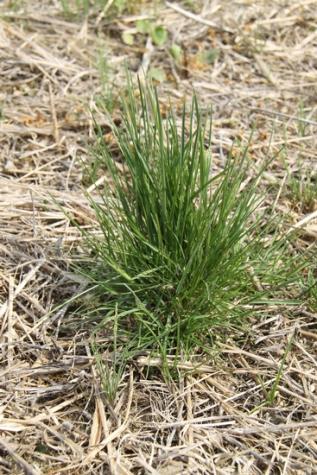Kentucky bluegrass (Poa pratensis) is a good, productive grass to include in forage mixtures in the Ozarks region, but having too much of this grass can limit production. Monitoring the amount of Kentucky bluegrass in the forage stand can be helpful to producers.
This perennial cool-season grass is identified by the narrow, V-shaped leaf blades. The leaf tips are said to be boat- or canoe-shaped. The leaves are typically 1 to 7 inches long.
Kentucky bluegrass is one of the first grasses to produce a seedhead in the spring. The seedhead is a panicle that is 2 to 8 inches long.
The forage value of Kentucky bluegrass is suitable for livestock. It is an important grass to include in forage mixtures because it is produced in early spring, when few other plants are growing. It can also tolerate close, frequent grazing.
The main drawback to Kentucky bluegrass is that it does not produce large quantities of forage. Because of the narrow, short-growth structure, forage tonnage is low. Too much Kentucky bluegrass in a stand can limit productivity and is sometimes an indicator of overgrazing.
It is also tough to remove, so the best option is to interseed more desirable forages such as tall fescue, orchard grass and brome. Establishing these types of grasses in the fall is recommended; Kentucky bluegrass has very little growth in the fall, so planting these other grasses should help with their establishment process.
Now is the time to take notice of the amount of Kentucky bluegrass in pastures; if it’s overtaking pastures, plan to interseed these other species this fall.
Photos
Kentucky bluegrass
Kentucky bluegrass can be identified by its short, narrow leaves and leaf tips that are canoe-shaped. MU Plant Sciences photo.
Kentucky bluegrass seedhead
Kentucky bluegrass is one of the first grasses to produce a seedhead in the spring. MU Plant Sciences photo.
Writer: Sarah Kenyon

